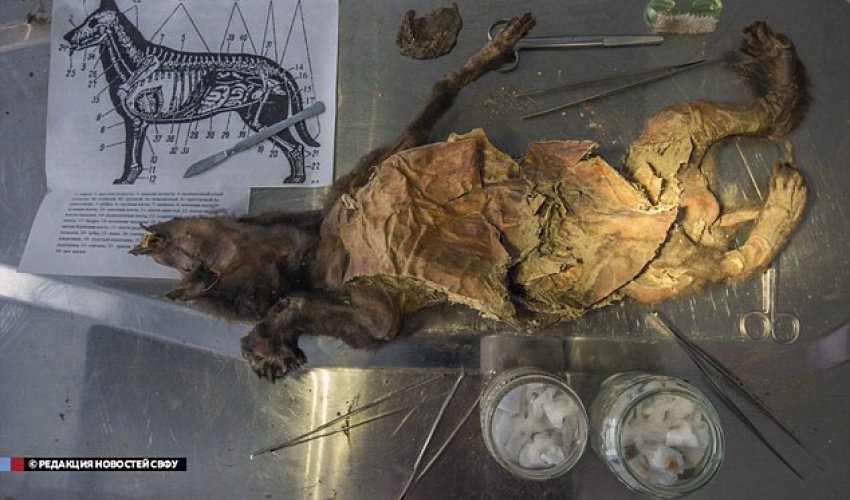'World's oldest mummified dog' goes under the knife

Sensational images have emerged of the remains of a perfectly-preserved mummified puppy, found sealed in the Siberian permafrost after more than 12,400 years.
Taken during a post-mortem examination by scientists, they show incredible detail about the prehistoric beast including its fur, savage teeth and even what it ate during its last moments.
The dog - believed to be a three-month-old female - was unearthed by accident by two brothers searching for woolly mammoth tusks in the Sakha Republic, also known as Yakutia.
It is the only naturally mummified canine ever found in the world, and is so well preserved even its internal organs and the contents of its stomach were visible.
The autopsy took place at the Institute of Medicine within the North-Eastern Federal University in Yakutsk and experts said the results will 'greatly help' the research of ancient dog species, reported The Siberian Times.
There is even hope the study could prove if the animal was an ancestor of modern-day domestic pet dogs.
Professor Darima Garmaeva, of the Institute of Medicine, said: 'What is of real interest is the fact the animal has a completely preserved carcass, which is unique by itself, with nothing like it in the world.
'Although the tissues are mummified, they have no post-mortem decomposition, as usually happens with biological material.'
The mummified remains were found in 2011 by brothers Yuri and Igor Gorokhov who were looking for signs of woolly mammoths near their home town of Tumat.
As they searched by the edge of the Syallakh River in the Ust-Yana region, they found tusks next to a strange animal entombed in ice.
Curious as to what it was, they contacted North-Eastern Federal University and a team excavated the site and confirmed the remains belonged to an ancient dog.
It was immediately named the Tumat Dog, after the brothers' village, and radiocarbon analysis dated it to about 12,450 years old.
Scientists spent four years studying and DNA-testing the remains, which were kept in a freezer, and it was in April that a post-mortem was eventually carried out - with details only now emerging.
(dailymail.co.uk)



www.ann.az
Similar news
Similar news
Latest news 
More news 



































 Photo
Photo 



 Video
Video 

